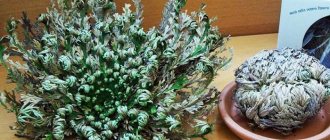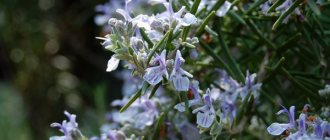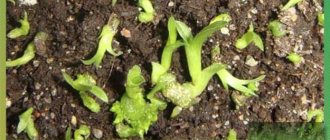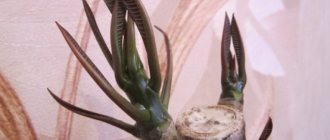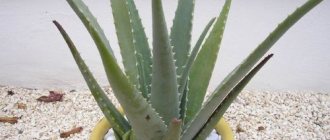Cuttings have long been considered the only and most effective way to propagate ornamental roses. Today, more and more gardeners prefer to experiment and prefer planting seeds. This is a long and labor-intensive process, but as a result the plant has increased resistance, immunity and an attractive appearance.
If you follow planting technology and proper care, you can grow a rose from seeds even at home. From the article you will learn all the intricacies of this method of reproduction.
Benefits of growing roses from seeds
Growing roses from seeds is a complex process that takes a lot of time and effort. It is possible to achieve flowering of the plant only after several years from the moment of planting. Despite this, this method has undeniable advantages:
- unlike cuttings, you can get several plants, which is especially important when landscaping the area, creating a flower bed or hedge on the site;
- roses grown from seeds are more resistant to disease and are stronger and more resilient plants;
- using seed propagation you can get a potted rose that can be grown indoors;
- the cost of seeds is significantly lower than rose cuttings, which makes it possible to save money when planting a large volume.
Planting material is difficult to find on sale, so flower growers often order seeds from China. However, the so-called Gift roses ordered from China do not always germinate, and the result of growing can be completely unpredictable.
You can also get the seeds yourself by collecting them after the adult plant has flowered, but they have low germination capacity and quickly deteriorate.
What rose seeds look like: a detailed description of appearance
Rose seeds are beige or brown in color and are similar in shape to buckwheat. Now on sale you can find seeds of floribunda, polyanthus, park, tea, cinnamon roses, etc.
A rose bush can be obtained from a seedling and seeds
For your information! Chinese seedlings of the Angel Wings variety are very popular today.
When to sow seeds for seedlings
The timing of planting rose seeds depends on the climatic conditions in the growing region, as well as the type of plant itself. Choosing a period depending on the variety:
- Chinese roses are usually planted starting in early February. Usually they are highly resistant to unfavorable conditions, so seedlings can be replanted in early spring;
- It is recommended to sow polyanthus rose seeds from January, due to the slow rate of seedling development and the need for stratification;
- wrinkled and brown roses are usually planted as seedlings in the second half of autumn, followed by transplantation into open ground only in the spring.
In cold regions, you need to time planting to avoid frost during transplantation to a permanent location. To do this, the deadline is shifted by 1-2 weeks. If you plan to grow roses indoors, planting at any time of the year is acceptable.
Soil for sowing seeds
The substrate for germinating rose seeds should be light and fertile. It is best to use store-bought compositions intended for roses, but you can prepare the soil yourself. For this purpose, you need to mix garden soil, peat and sand in a ratio of 2:1:2.
The presence of drainage is a mandatory requirement, so you need to prepare expanded clay or pebbles in advance for subsequent placement on the bottom of the pot. If you use self-prepared soil, it must be disinfected before planting, for example, by calcining it or treating it with a 5% solution of potassium permanganate.
Disease and pest control
Stone rose is extremely rarely affected by pests. However, in rare cases, it still happens that the plant suffers from mealybugs, which destroy the leaves and root system.
It is not difficult to recognize the hated pest. These are colonies that look like dirty cotton wool on the leaves of the plant. You can remove the pest using alcohol-soaked cotton pads. Or just rinse with water. If the case is very advanced, then the soil and plant are sprayed with insecticides (in such cases, Aktara and Fitoverm are used).
Note! When the young are waterlogged or the soil is damaged by a fungal infection, they wither. You can get rid of this infection only in the initial stages, with the help of special drugs Fitosporin or Trichodirmin, which follow strict instructions
How to prepare seeds before planting
Stratification is a mandatory step in growing roses from seeds. For this purpose, planting material is carefully sorted and all damaged and deformed specimens are removed. After this, the seeds need to be treated with a 10% solution of hydrogen peroxide or a 5% solution of potassium permanganate. When working with purchased polyanthus or Chinese roses, there is no need to trawl the seeds, since this has already been done by the manufacturer.
Then the seeds are laid out on a cotton pad soaked in hydrogen peroxide and covered with another one on top. They are placed in plastic bags, on which it is convenient to attach a sticker with the name of the variety, and then put in the refrigerator. In such conditions, the seeds should be kept for 1.5-2 months at a temperature of +2-5°C. During this time, you need to regularly check the substrate for mold and moisten it as necessary. After the sprouts appear, the planting material is ready for sowing.
How to grow properly
Planting and caring for viscaria: growing from seeds
Rose seeds
Having received a long-awaited bag of seeds, or maybe more than one, you first need to check its contents and select the most intact and healthy seeds for planting. The fact is that seeds in China are picked by hand, without sorting, which increases the risk of getting a weed or a completely different plant along with the beauty.
So, the seeds have been carefully sorted and it’s time to start the sowing campaign. Successful gardeners recommend several ways to grow indoor roses from roses. Let's look at each of them.
- The first method is carried out after preliminary stratification - placing the seeds for a certain period in the lower compartment of the refrigerator. Some harden completely dry seeds, leaving the seed in the cold for several days. Others are pre-soaked and placed in the refrigerator until germination. But there are also gardeners who use a combined type of stratification, which is expressed in alternating exposure of seeds to cold and warm temperatures.
That is, stratification happens:
- cold;
- warm;
- combined.
Regardless of the chosen method that promotes better seed germination, further steps are almost the same and are as follows.
Seeds are placed in a moist environment. For this, cotton pads or gauze moistened with hydrogen peroxide will be used, and if you don’t have the former, you can simply replace it with a cloth. Next, the wrapped seeds are placed in a small container or bag and stored either in the cold or in a dark place with moderate air temperature.
If you purchased several varieties of roses from Aliexpress, you should take care to label each one. To do this, prepare sticks with the name of the varieties in advance. They can be made in the form of flags from toothpicks or In this state, the seeds remain until germination. But we must not forget to keep an eye on them, because some are doomed to die from excess moisture or flowering, which means the rest must be protected by removing the dead.
- Treatment of seeds with growth stimulants, including special ones.
This method greatly speeds up the germination process and is recommended for seeds that are heavily dried, which can delay the process.
- Planting pre-treated seeds directly into the ground.
This is the most unlikely way to get results, but the least troublesome. To achieve maximum results, pre-disinfected seeds are planted in open ground. It is better to do this in August. The planting material is deepened by half a centimeter. In dry autumn, it is worth moistening the soil and covering it with special material to retain moisture. The soil opens in April.
But in early spring, already germinated seedlings are planted in open ground. In this case, you need to take care of a place without drafts and care for the plant daily.
What you need to grow a rose seedling
In order to grow a rose at home you will need:
- seeds;
- general container and individual pots for seedlings or peat tablets;
- hydrogen peroxide;
- cotton pads;
- purchased or prepared substrate;
- expanded clay, pebbles or coarse river sand.
The agricultural technology for growing roses from seeds is practically no different from other plants, so a standard set of equipment and items is usually required.
Sowing seeds
After preparing the soil and the first sprouts appearing on the seeds, the rose can be planted in containers. Planting material is sown only superficially, without deepening it into the ground, but in order to avoid the appearance of a black leg on top, it is recommended to cover them with a thin layer of fine sand or perlite. After this, the soil is moistened with a spray bottle and the container is covered with film or glass.
Why you should order seeds from China
Have you decided to order seeds of an unusual variety of roses from Aliexpress? Have you ever wondered why most florists prefer to order seeds made in China? After all, you can purchase high-quality seed from Holland, which is famous for its beautiful flowers all over the world. Below is a list of the undeniable advantages of ordering seeds on Aliexpress.
- Wide assortment - the site’s catalogs offer the purchase of a wide variety of varieties, be it purple, black, blue or white roses.
- Low cost is one of the most obvious reasons why flower growers order seeds from the Middle Kingdom.
- Convenience of purchasing - you do not have to go to a neighboring city to pick up your order, and the courier will be able to deliver the parcel directly to your apartment.
In general, ordering queen flower seeds from Aliexpress is a fairly rational and convenient solution that will allow you to save a significant amount of money and purchase a truly unusual variety of flowers.
Growing conditions
To achieve healthy and strong seedlings, it is very important to create favorable conditions for their development. This can be easily done at home, it is only important to follow simple rules.
Lighting and location
A box of seedlings or peat pots is best placed on the eastern or western windowsill of an apartment, where it is easiest to achieve long-term, diffused sunlight. When exposed to direct sunlight, especially at midday, the seedlings must be shaded.
Temperature
The optimal temperature for seedling formation is 18-21°C. This is easy to create in an apartment, so additional heating is usually not required. Sudden changes in temperature should not be allowed, and it is also not recommended to keep seedlings in colder conditions.
Air and humidity
During the entire period of seedling growth, it should be regularly sprayed, avoiding waterlogging of the soil. Roses react acutely to drafts, so drafts should not be allowed to appear during the entire period of development of young plants. During the active heating season, it is especially important to maintain air humidity, since radiators lead to the formation of a dry microclimate in the room.
Watering
Throughout the entire period of seedling development, it is necessary to check the soil moisture. Avoid overmoistening and drying out, as well as the formation of a dry crust on the surface. In order not to harm the fragile root system of young roses, it is recommended to use only a spray bottle. When kept in a dry room, you can additionally water the seedlings, carefully introducing warm water between the plants.
Collection and storage of seeds
Seeds of climbing roses, the photo of which is located below, can be purchased at the store or collected at home yourself. Buying seeds is very risky because there is no guarantee that they will sprout and have the specified characteristics.
It's better to prepare it yourself. How to do it:
- At the end of summer, the fruits are harvested (by this time they should acquire their characteristic shade: reddish or yellowish).
- They cut the fruit and remove the seeds (what the seeds of a climbing rose look like - in the photo below), trying to remove the pulp, which slows down the awakening of the embryo.
- Mix with wet sand or peat-sand mixture (4:1). Drying is not recommended, because this will negatively affect germination.
- Pour into a box and put it in the basement, where there is free access to air and the required level of humidity.
Seeds are stored for up to 1.5 years. After 8 months they can be planted in the ground - the planting material has already passed stratification.
Caring for rose seedlings
After emergence of seedlings, the planting of seedlings can be thinned out by removing all weak and deformed plants. After this, you need to follow simple care rules in order to get healthy seedlings ready for planting in open ground.
Temperature
After the formation of several leaves on the seedlings, the air temperature can be slightly reduced to 15-18°C. This is enough to maintain the health of the seedlings and for their development. You cannot store a container with seedlings on the balcony, since there is a risk of sudden temperature changes, especially at night, to which young plants always react sharply.
Backlight
For the harmonious growth of roses from seeds, daylight must be at least 10 hours. In early spring, this is usually not a problem in most regions, but when daylight hours decrease, additional lighting must be used. For this purpose, a phytolamp or a regular fluorescent lamp is best suited. The lamp should not be lowered low to the seedlings to avoid burns to the leaves.
Watering seedlings
Roses should be watered in such a way that the soil is constantly moist, but not too soggy. The substrate should not be allowed to dry out, which can lead to diseases of the root system. The optimal watering regime is 2 times a week when growing seedlings indoors. If necessary, for example, in case of wilting of leaves, you need to additionally spray the plants.
Feeding seedlings
During the growing period of seedlings, fertilizing is carried out twice. For this purpose, it is best to use liquid fertilizers for roses, which contain all the necessary beneficial elements and minerals. The first time the composition is applied after the first leaves appear, and then 2 weeks after picking. It is not recommended to use only nitrogen formulations, as this leads to rapid growth of the green parts, rather than the overall development of the plant.
Picking
When using peat pots, there is no need to pick. If you used a common container for seedlings, transplant the roses into individual containers when the plants have 3-5 strong leaves.
To do this, you need to carefully dig up the seedling and, together with a lump of earth, put it in a plastic pot filled with soil 2/3 of the volume. Then you need to add the substrate and water the plant generously. After transplantation, you should not use fertilizer for 10-12 days, allowing the rose to adapt to the new conditions.
Pinching
At the stage of growing seedlings, it is necessary to remove all deformed and damaged leaves. It is best to carefully pinch them rather than cut them with a knife. In addition, all seedlings affected by blackleg and other infections should be removed.
Diseases and pests of seedlings
The most dangerous diseases for rose seedlings are considered to be fungal infections, infection of which usually occurs when using poor-quality soil, non-compliance with temperature conditions and watering. Among the most common diseases, I highlight root rot and blackleg.
The infection can be determined by the characteristic blackening of the root part, which becomes viscous and loose. All affected seedlings must be removed, after which the substrate must be disinfected with a solution of potassium permanganate to avoid contamination of other roses.
The most common pest is the spider mite. Infection with it usually occurs when rose seedlings are grown in unsuitable conditions and care rules are not followed. The presence of an insect can be determined by the characteristic white-gray coating on the leaves and wilting of the green parts.
Most of the population can be destroyed mechanically, for example by washing leaves. And then you need to apply an insecticide, for example, Actellik, Aktara or Bordeaux mixture.
Transplantation to a permanent place
Planting in a permanent place is carried out only after the end of night frosts, which are destructive for young plants. In the middle zone, transplantation can be carried out from the second half of April; in the north it is recommended to wait until May. The seedlings need to be transplanted together with a lump of earth, into previously prepared individual holes.
The procedure is usually carried out on a dry and sunny day, and after picking the roses, you need to shade them and install a support to avoid damage from the wind. If you plan to grow a Chinese rose in a flowerpot or pot, then replanting can be done earlier, when keeping the plant on a balcony or loggia.
Regardless of the method of growing roses, the seedlings must be hardened before picking. After the formation of the first leaves, young plants should be regularly taken out into fresh air, gradually increasing the duration of the procedure to 4-6 hours. This allows you to strengthen the seedlings and reduce the risk of infectious diseases.
Stock rose planting and care in open ground
Plant characteristics
- Perennial, often grown as a biennial
- shade-tolerant and light-loving,
- drought-resistant, prefers moderate watering,
- winter-hardy
- high (over 100 cm) or medium (up to 100 cm)
- blooms for a long time (May-June), in summer (July-August)
Mesembryanthemum - growing from seeds
The genus includes more than 60 species; in ornamental gardening, preference is given to 2 species. Breeders develop new varieties every year.
Stock rose Bordeaux
Tall plant, up to 2.5 m. Densely double, large flowers with a diameter of up to 12-14 cm are collected in an inflorescence-brush. Suitable for planting in groups, as decoration for walls, fences, for zoning an area, for cutting.
They bloom in the second year after sowing, from July to September.
Stock rose Assorted
The plant is low to 80 cm, the bush is powerful. Flowering is abundant and long lasting. Used for group plantings and for cutting.
Flowering in the first year.
Stock rose Peach Dream
Tall plant, up to 2 m. The flowers are up to 8 cm in diameter and tightly cover the stem of the stock rose. The flowers are densely double, large, of a very delicate peach color. Suitable for planting in groups, as decoration for walls, fences, for zoning an area, and are excellent for cutting.
They bloom in the second year after sowing, from July until frost.
Stock-rose Maroon
Tall plant, up to 2 m. The flowers are double, up to 12 cm in diameter, collected in a raceme-like inflorescence. Suitable for planting in groups, as decoration for walls, fences, for zoning an area, for cutting.
They bloom in the second year after sowing, from July to September.
Stock-rose Lyubava
It blooms in the second year, from July.
Stock rose Royal
A low-growing, neat bush - up to 50 cm high. Double flowers, up to 8-10 cm in diameter. Planted for decoration of borders, mixborders, for street and balcony containers.
When planted for seedlings in March-April, it blooms in the first year from July to September.
Stock rose Summer Carnival
Plant height up to 1.5 m. Double flowers, up to 14 cm in diameter. Various in color. Suitable for planting in groups, as decoration for walls, fences, for zoning an area, for cutting.
They bloom in the second year after sowing, from July to September.
Stock-rose planting
Rose stock is grown from seeds or through seedlings, or by direct planting in the ground.
Stock rose seeds photo
Seedlings
Seeds are sown for seedlings in March and early April. It is advisable to sow immediately in separate pots. Care as for ordinary seedlings, watering, temperature regime. Planting in open ground at the end of May, when the threat of frost has passed. Seedlings are planted in a permanent place according to a 30x40 cm pattern.
Directly into open ground
Experienced gardeners advise sowing seeds directly into open ground. Sowing is done in late May early June, immediately in a permanent place, 2-3 seeds are sown in a hole. The sowing pattern is 50x40 cm. The seedlings that appear after 2 weeks are thinned out, leaving the strongest plant. In the first year, the plant forms large rosettes of rounded leaves. Watering and weeding are normal plant care. In the first year, the plant needs light shelter.
Features of growing stock roses
- This is one of the most unpretentious plants, it grows in warm, sunny places, preferably without drafts, they prefer loose soils, fertilizing with humus or other organic matter, watering infrequently but plentifully.
- Tall varieties need support.
- Despite the fact that rose holly is a perennial plant, it needs to be grown as a biennial plant; old plants bloom poorly in the future, they are more susceptible to diseases, seeds scattered by self-sowing can mutate and lose their varietal qualities.
- It is susceptible to fungal rust; this disease manifests itself in brown spots and swellings on the leaves, which subsequently die. Control measures - preventive treatment with Fitosparin, watering only at the root, do not plant very densely.
Further care
The type and variety of rose determines its further care. It is important to consider that this is a moisture-loving and light-loving plant, the care of which is especially important in the first year of life. It is during this time that a powerful root system is formed, immunity and vitality are enhanced.
Watering
Water for the rose is applied only at the root to avoid moisture getting on the leaves, which can lead to the formation of spots on them. Throughout the summer, watering is carried out regularly up to 2 times a week at the rate of 10-12 liters of water per plant, if it is a dwarf rose, then up to 5 liters. To form young shoots, starting from the end of August, watering is completely stopped and resumed only in the spring at the beginning of the growing season.
Top dressing
Like other members of the Rosaceae family, the plant responds best to organic matter. That is why it is advisable to apply an aqueous solution of mullein or bird droppings twice a season - before the start of the growing season, and then during the transition to dormancy. Throughout the summer season, it is recommended to use liquid complex compositions for roses, which contain all the necessary macro- and microelements.
Loosening, mulching
The procedure is carried out in the first 2-3 years, until a natural layer of mulch from last year’s foliage is formed. Loosening should be carried out as a dry crust forms on the top layer of soil; the procedure is usually carried out 3-4 times during the summer. At the same time, it is recommended to add sawdust or peat to insulate the roots, reduce the growth rate of weeds and retain moisture on the surface.
Pinching, pinching, pruning
Shaping is an important task when caring for any type of rose. When growing these plants from seeds, during the first year, only pinch off deformed and weak leaves. And if flowering is observed, but all the buds must be removed, this will speed up the development of the plant itself and improve the quality of the flowers for the next season. Then the rose needs annual decorative and sanitary pruning, which is carried out in April.
Transfer
Roses can remain comfortably in one place for a long time without the need for replanting. Plant transfer is necessary when the growth rate has slowed down significantly and flowering is completely absent. Transplantation is carried out only in the fall, after first completely cutting off the entire bush to the base of the ground. A plant with several shoots and growth buds located on them is transferred to a new place along with a lump of earth, trying not to damage the developed root system.
Preparatory work
Before you start planting roses, you need to monitor the quality of the seed, which:
- can be bought or ordered in a store specializing in the sale of everything necessary for growing garden and home plants;
- collect it yourself from the rose bushes you like.
From seeds purchased ready-made, small shoots are often obtained and roses have small buds. Self-collected and properly processed planting material produces larger pink flowers.
In order to assemble them yourself, you need:
- so that the fruits on the bush turn red (on average, from the end of June);
- pick beautiful, whole fruits, excluding dried and rotten ones that cannot be used for sowing;
- cut each fruit and remove all the seeds from it, clearing them of pulp;
- high-quality seeds are pale red in color and appear unripe. It is worth noting that one box may contain seeds of different shapes, but this does not affect their quality.
Important! Seeds from unripe fruits germinate more easily and have a more powerful germination and growth force, so they are collected before the beginning of autumn, before their final ripening is complete.
Preparing the container and soil for planting
To plant rose bush seeds, you need to take care of high-quality soil. For this you can use:
- special universal substrate for seedlings, sold in a flower shop;
- prepare the planting mixture with your own hands.
A homemade substrate should contain:
- turf or garden soil;
- coarse sand;
- lowland peat.
This sandy loam soil should have a neutral pH of 6.5.
It is convenient to plant rose seeds:
- into cassettes;
- peat tablets;
- landing boxes.
They avoid the need for picking and make it possible to replant ungerminated seeds.
Seed treatment
Preparation of planting material involves the following manipulations:
- In order to preserve the seeds and prevent them from rotting, immediately after removing the fruit from the fruit pod, they are washed, placed in gauze or a sieve, and immersed in a solution of hydrogen peroxide for 20–30 minutes. This procedure will disinfect the planting material and prevent the appearance of mold.
- After this time, a substrate soaked in peroxide solution is formed for them. To do this, 2 parts of a paper towel, cloth or cotton pad are moistened in the specified liquid and seeds are laid between them.
- For further conservation, planting material is laid out in separate bags along with the substrate. The bag must close well to prevent rapid evaporation of the liquid.
Important! The package with seeds must be marked, indicating the date of collection of planting material, the beginning of its stratification and the variety of rose bush. To speed up germination, the substrate is sent to the refrigerator, immersing the bags in the compartment, at a temperature not exceeding +5°C
This will allow the stratification procedure to be carried out - simulating natural conditions in winter in the natural habitat. This treatment lasts 2 months. The condition of the seed substrate should be checked regularly to exclude the possibility of mold. If traces of it are found, it is necessary to rinse the contents of the bag and place it in a new, impregnated substrate. It is also necessary to ventilate the substrate and additionally moisten it if the moisture has evaporated
To speed up germination, the substrate is sent to the refrigerator, immersing the bags in the compartment, at a temperature not exceeding +5°C. This will allow the stratification procedure to be carried out - simulating natural conditions in winter in the natural habitat. This treatment lasts 2 months. The condition of the seed substrate should be checked regularly to exclude the possibility of mold. If traces of it are found, it is necessary to rinse the contents of the bag and place it in a new, impregnated substrate. It is also necessary to ventilate the substrate and additionally moisten it if the moisture has evaporated.
However, this is not the only method of stratification that can affect the rate of emergence of rose bush seedlings. A longer option involves preparing seeds for 8 months. After receiving the seeds, they are mixed with wet sand and placed in containers, boxes can be used for this, and sent to the basement. The air temperature in this room should be +3…+5°C. The seeds must be kept in the given temperature conditions and moistened sand for the entire specified period. Ventilation in the room should also be controlled.
Adviсe
To get a healthy and strong plant, you can use the following useful tips:
- When purchasing roses on Chinese websites, carefully study reviews, photos and descriptions of planting material. It is advisable that the bag of seeds be accompanied by instructions;
- It is not advisable to start immediately with planting polyanthus roses. First, you can practice on Chinese seeds, which are easier to care for and easier to use;
- It should be remembered that the fruits of some varieties of roses must be collected before they ripen on the bush, otherwise they will be unsuitable for subsequent rooting;
- A rose grown from seeds can also be kept at home. To do this, you need to choose dwarf varieties or use a large pot;
- plants that were planted with seeds in the fall have time to form a stronger root system, which is useful for transplanting into open ground;
- The first flowering will most likely be absent or the buds will hardly develop. To improve the condition of flowers for the next season, they need to be pinched as they form.
Growing roses from seeds is a complex and time-consuming process, but the result is a beautiful and resilient plant. It can be grown at home or planted in your garden. Some Chinese roses have unusual petal colors that will become a real decoration for your garden.
Pros and cons of growing this way
Lavender seeds - what the seedlings look like
Planting roses with seeds has its advantages and disadvantages. Benefits include:
- availability. Seed material can be easily purchased at any gardening store. Also, in order to obtain a large number of seedlings, it is possible to independently obtain seeds from the seed capsule of a flower. This is a fairly economical way to grow seedlings;
- vitality. Roses grow with powerful and strong rhizomes;
- frost resistance. The roots of the flower are strong enough that it can recover on its own after frost;
- variety. From such germination you can get your own type of rose;
- cuttings From the resulting shrubs, you can grow even more kuts using cuttings. When cuttings, it is possible to obtain a copy of the mother plant, while planting seeds is always an experiment.
The disadvantages are:
- germination. Not all seeds can germinate, only full-fledged ones;
- time. Rose seeds are difficult to germinate, so the wait for the first shoots will be long;
- troubles. The process of working and caring for seedlings is quite painstaking. You need to take into account all the features to get a good result;
- limitation of varieties. Not all types of roses reproduce from seeds.
